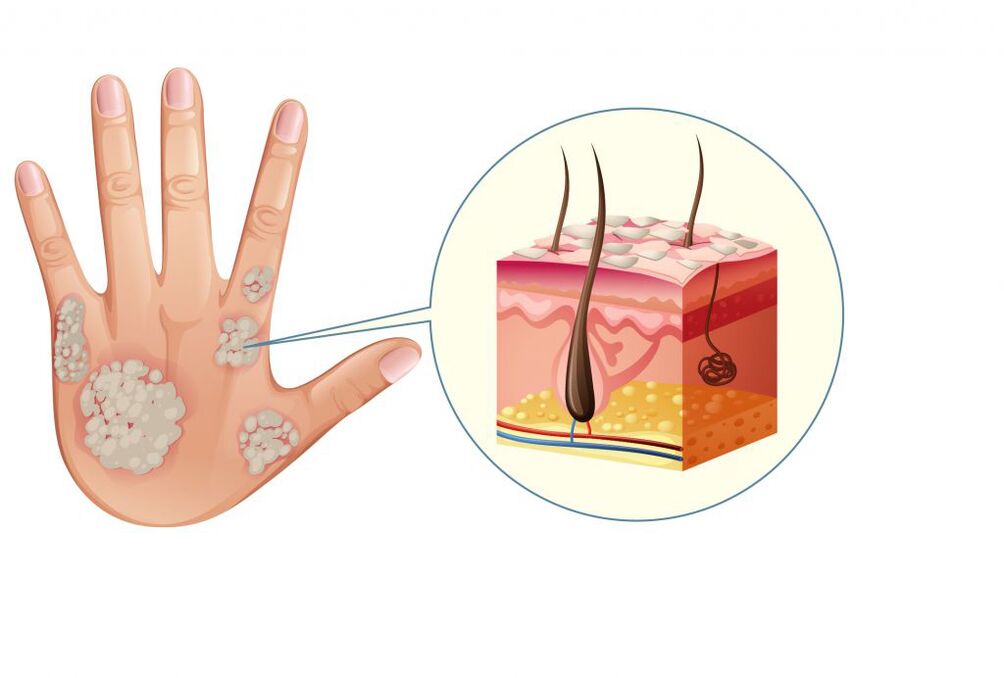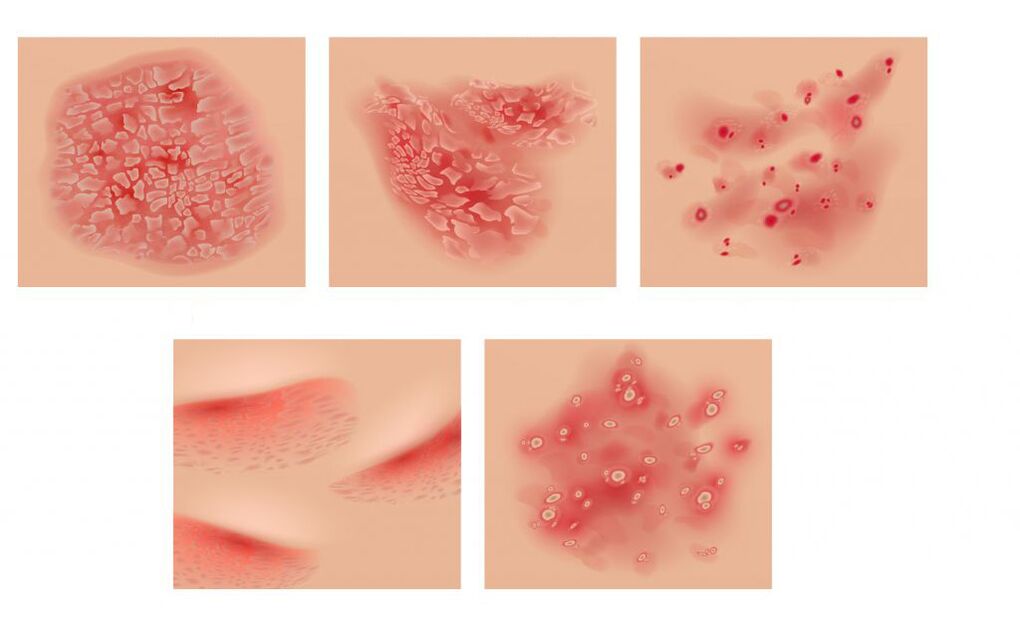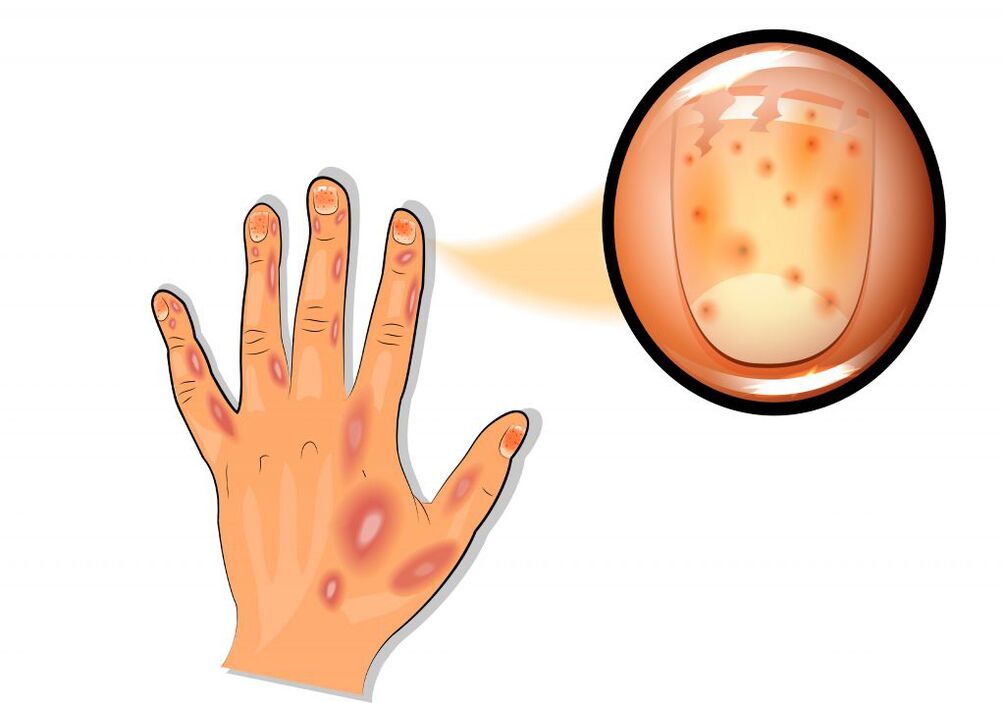Psoriasis: causes, symptoms, diagnosis and treatment.
Psoriasis is a chronic non-infectious disease that can affect various organs: skin, joints, heart, kidneys.
Mild psoriasis often appears on the skin in the form of well-defined pink-red papules (nodules rising above the surface of the skin) that attach to the plates with silver-white scales.
In moderate and severe forms of the disease, the inflammatory process leads to damage to the musculoskeletal system and cardiovascular system. Psoriasis has a tendency to lead to a relapsing course (recurrence of symptoms after complete or partial recovery) and additional diseases that impair the quality of life of patients.
Causes of psoriasis
The disease can be based on several triggers. However, it is still unknown which of them is primary and which is secondary. Immune system dysfunction is considered to be the main cause of psoriasis. Cells that seek to destroy disease-causing agents begin to attack their own cells (primarily the skin). As a result, an inflammatory process develops that causes accelerated cell division of the epidermis (epidermal hyperplasia) and the formation of psoriatic papules and plaques.

Inadequate immune response is largely due to genetic characteristics.
Psoriasis is often inherited.
To date, more than 40 chromosome regions have been identified associated with the risk of developing psoriasis. The onset of the disease can occur with a weakening of the immune system against the background of stress, infectious, endocrine diseases. Psoriasis is often accompanied by allergic and immunodeficiency conditions based on impaired immune response. In addition, psoriasis can be triggered by certain medications (antidepressants, beta-blockers, non-steroidal anti-inflammatory drugs).
Classification of psoriasis
Depending on the localization of the pathological process, different types of psoriasis differ. The most common vulgar orcommon, psoriasiswhen well-defined pink papules appear on the skin, attached to plates covered with silver-white scales. When the scalp is damaged (seborrheic psoriasis) rash in the form of yellowish scales may descend on the forehead, forming a seborrheic "crown". In patients with metabolic disorders, plaque may appear as an exudate, a fluid secreted during inflammatory processes (exudative psoriasis). During childhood and adolescence, especially after streptococcal infections, the disease may be exacerbated, with numerous bright red tear-shaped papules with slight peeling and infiltration of the skin (guttate psoriasis). Sometimes there is pustular psoriasis, characterized by the appearance of pustules on the background of reddened skin, more often in the arches of the feet or palms.Psoriatic erythrodermaIt can occur against the background of exacerbation of common psoriasis under the influence of provocative factors. Dry white scales cover the skin, become bright red, swell and become warm to the touch. He runs very hardgeneralized Zumbusch psoriasis. It is characterized by the appearance of small purulent vesicles on reddened skin, which combine to form "purulent lakes".Psoriatic arthritisis accompanied by damage to the joints and develops simultaneously with the rash or occurs before them.

Symptoms of psoriasis
The skin form of psoriasis is accompanied by the appearance of bright pink dotted papules, sometimes in the form of drops. Together, they form plates covered with silver-white scales.
Rash is located on the extensor surfaces of the arms and knee joints, scalp, lower back and sacrum.
The top layer of plaques is formed by easily removed scales of dead epidermis. First they occupy the center of the board, and then fill the entire area. When the scales are removed, a bright bright red surface appears. Sometimes the plaque is surrounded by a pink edge - a further growth zone, the surrounding skin does not change. The rash is accompanied by severe itching. In patients with psoriatic erythroderma, the temperature rises against the background of rashes on the whole skin (fever with chills) and severe itching, lymph nodes increase.
With a long course of the disease, hair and nails can fall out.
Generalized Zumbusch psoriasis is very difficult. Purulent eruptions cover the entire skin and are accompanied by severe fever and intoxication. Psoriatic joint damage is characterized by pain and redness of the skin on the articular surfaces. Any movement is difficult, inflammation of the ligaments and tendons develops. Nail plates are very often affected by psoriasis, clear depressions appear on the nail surface ("high" symptom).

Small, reddish and yellowish-brown spots appear at the bottom under the nail plate (symptom of "oil stain"). Dystrophic changes in nails and hair often develop.
In children, especially infants, the symptoms of psoriasis have their own characteristics.
Effusion and slight peeling of the upper layer of the epidermis may occur in the area of redness that occurs in the folds of the skin. This picture resembles a diaper rash or candidiasis. Occasionally there is a rash on the skin of the face or genitals.
Diagnosis of psoriasis
The disease can be diagnosed on the basis of symptoms of the psoriatic triad (white stearic surface of the papule; a reddish-bright layer after the scales have cooled and accurately identify the protrusion of blood after its removal).
An additional feature is the Koebner phenomenon. This is the appearance of erythematous-scaly rashes (scratches, redness and peeling areas in the area of scratches) after 7-12 days in the irritated area of the skin. Histological examination of the affected skin area is sometimes performed to confirm the diagnosis. In addition, clinical and laboratory tests are required: clinical blood test, biochemical blood test (total protein, protein fractions, C-reactive protein, ALT, AST, LDH, creatinine, electrolytes: potassium, sodium, chlorine, calcium).
Which doctors to consult
If you often see infectious diseases, skin injuries, rashes that occur against the background of stress, you should consult a therapist or dermatologist. In case of systemic damage to the patient's body, they can consult an ophthalmologist, endocrinologist, gynecologist or other specialists.
Treatment
Psoriasis affects both the skin and the musculoskeletal system, as well as internal organs. Ointments with local glucocorticosteroids, synthetic analogues of vitamin D3, activated zinc, salicylic acid and other components are recommended only when the rash appears on the skin. Hormonal creams should be used with caution in atrophic skin.
Prolonged use of steroid creams should take into account the possibility of hormonal disorders.
The effectiveness of hormonal creams increases with salicylic acid, analogues of vitamin D. Second-generation acetic acid-based aromatic retinoids are used to treat severe forms of psoriasis. The drug slows down the proliferation of epidermal cells, normalizes the process of keratinization and has an immunomodulatory effect. Along with retinoids, phototherapy (medium wave UV and PUVA therapy) is also recommended. As a systemic therapy, the doctor may prescribe immunosuppressive drugs. If necessary, appoint detoxification and desensitization therapy, plasmapheresis.
Complications of psoriasis
10% of patients develop psoriatic arthritis, which affects the joints of the spine, arms and legs. Patients suffer from joint pain and morning stiffness. Features of psoriatic arthritis include asymmetry of the manifestations, which can be combined with damage to the nails. Psoriasis is often accompanied by or accompanied by diseases.
The risk of coronary heart disease and stroke increases due to inflammatory vascular lesions.
The development of diabetes and Crohn's disease is also possible. In some cases, aggravation of psoriasis can lead to disability.
Prevention of psoriasis
Psoriasis prevention measures are primarily aimed at strengthening the immune system. Skin care should include hydration and nutrition. When prone to allergies, it is necessary to control nutrition, avoid fatty and spicy foods, excessive consumption of carbohydrates, potatoes. Vitamin therapy should be a mandatory component of psoriasis prevention.
In addition, the activity of the immune system depends mainly on the condition of the nervous system. People with excessive responsibilities, busy schedules and constant negative psycho-emotional effects are more prone to autoimmune diseases, including psoriasis. Therefore, the prevention of psoriasis should be accompanied by physical therapy (abstinence from bad habits, physical activity), as well as the achievement of psycho-emotional comfort.
IMPORTANT!
The information in this section should not be used for self-diagnosis or self-medication. In case of pain or other exacerbation of the disease, only the attending physician should prescribe diagnostic tests. You should contact your doctor for diagnosis and proper treatment.























